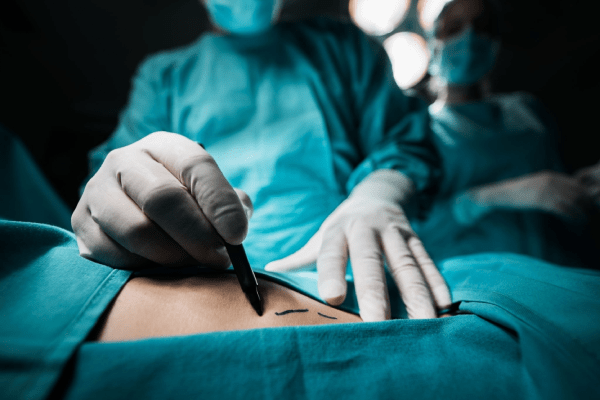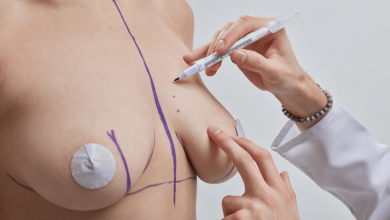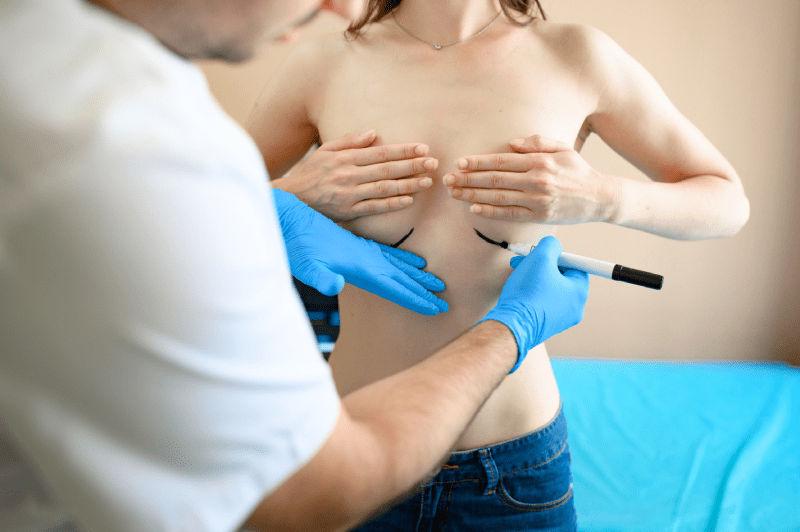Tummy Tuck or Liposuction in Turkey? Differences Between Tummy Tuck and Liposuction

What is Tummy Tuck? How is Tummy Tuck Done?
A tummy tuck, also known as abdominoplasty, is a popular cosmetic surgery procedure that involves removing excess skin and fat from the abdominal area in order to create a firmer, flatter, and more toned appearance. This procedure can be especially beneficial for those who have experienced significant weight loss or pregnancy, as these factors can often lead to loose or sagging abdominal skin and weakened abdominal muscles.
During a tummy tuck procedure, the surgeon will make an incision along the lower abdomen, from hip to hip. The skin and fat are then separated from the abdominal muscles, which are tightened and pulled together closer in the midline. The excess skin and fat are then removed, and the remaining skin is pulled downward to create a tighter, flatter surface.
While a tummy tuck can be a highly effective way to achieve a more toned and attractive abdominal area, it is not a weight loss procedure and should not be approached as such. Patients with excess fat deposits may be better suited for liposuction, which focuses specifically on removing fat cells from targeted areas of the body.
What is Liposuction? How is Liposuction Done?
Liposuction, also known as lipoplasty, is a popular cosmetic surgery procedure that involves removing excess fat from various areas of the body to improve body shape and contour. This procedure can be particularly effective for people who have achieved a stable and healthy body weight but still struggle with stubborn fat deposits that do not respond to diet or exercise.
During a liposuction procedure, the surgeon makes small incisions in the targeted area, such as the abdomen, hips, thighs, arms, or chin. They then insert a small, hollow tube called a cannula into the incisions and use gentle suction to remove excess fat. The procedure can be performed using local anesthesia, intravenous sedation, or general anesthesia, depending on the preferences of the patient and the extent of the procedure.
While liposuction can be a highly effective way to remove stubborn fat deposits and achieve a more toned and attractive physique, it is important to approach the procedure with realistic expectations. Liposuction is not a weight loss procedure, and it should not be viewed as a substitute for healthy habits such as regular exercise and a balanced diet.
Recovery from liposuction typically involves a few days of rest and limited activity, as well as the use of compression garments to minimize swelling and support the body during the healing process. Most patients see a noticeable improvement in their body shape and contour within a few weeks after the procedure, and these results can be long-lasting with the right maintenance and lifestyle choices.
Who Can Not Have a Tummy Tuck?
While a tummy tuck, also known as abdominoplasty, is a generally safe procedure, not everyone is a good candidate for this surgery. Individuals who have certain health conditions or lifestyles may need to avoid a tummy tuck or delay the procedure until certain issues are addressed.
Here are some examples of people who should not have a tummy tuck:
- Women who are pregnant or planning to get pregnant: A tummy tuck is not recommended for women who are pregnant or planning to get pregnant in the near future, as the procedure can compromise abdominal muscles that could severely impact a healthy pregnancy and delivery, as well as compromise the aesthetics. It is best to wait until after childbirth to consider a tummy tuck procedure.
- Patients with certain medical conditions: People who have underlying medical conditions such as uncontrolled diabetes, a bleeding disorder, heart disease, or a weakened immune system may not be suitable candidates for tummy tuck. The surgery can also pose a risk for people who smoke or use tobacco products, as nicotine can impair the body’s natural healing process and increase the risk of complications.
- People with a high BMI: A body mass index over 30 or excessive weight could present risks during surgery and can compromise the efficiency and aesthetics of the procedure.
- Individuals with certain abdominal scars: If a person already has extensive scarring on the abdomen from previous surgeries, such as a C-section, the surgeon will need to evaluate the possibility of performing tummy tuck and how extensive the desirable results can be.
- Patients with unrealistic expectations: Tummy tuck can be an amazing procedure, but patients should approach it with realistic expectations. While this procedure can significantly reduce unwanted abdominal fat and loose skin, it should not be viewed as a weight-loss procedure, and patients should have reasonable expectations for the final outcome.
In conclusion, it is crucial that individuals considering abdominoplasty discuss their medical history and expectations with an experienced and qualified plastic surgeon prior to undergoing the procedure.

How Many Kilos Go After Tummy Tuck?
A tummy tuck, also known as abdominoplasty, is a surgical procedure that involves removing excess skin and fat from the abdominal area to create a more toned and contoured appearance. While a tummy tuck can help improve the overall appearance of the midsection, it is not intended to be a weight-loss procedure.
The amount of weight lost after a tummy tuck varies between patients and is typically minimal. The primary goal of the procedure is to remove excess skin and fat from the abdominal area to create a more contoured appearance. While it is possible to lose a small amount of weight as a result of the procedure, this weight loss is generally not significant and should not be relied upon as a primary means of losing weight.
It is important to understand that tummy tuck is not a substitute for leading a healthy lifestyle, eating a balanced diet, and exercising regularly. Maintaining a healthy weight is crucial to achieving optimal results after a tummy tuck. In some cases, a weight loss regimen may be recommended before the procedure to help patients achieve their desired results.
In summary, while it is possible to lose a small amount of weight after a tummy tuck, weight loss should not be the primary goal of the procedure. The primary goal of a tummy tuck is to remove excess skin and fat from the abdominal area to create a more toned and contoured appearance. It is important for patients to approach the procedure with realistic expectations and continue to lead a healthy lifestyle to maintain the best possible results.
How Many Months Does A Tummy Tuck Heal?
Recovery from a tummy tuck depends on the extent of the surgery and the individual patient’s overall health condition. While there is no definitive timeline for tummy tuck recovery, a general healing timeline can be provided.
Here is a timeline of what patients can typically expect after a tummy tuck:
First 2 Weeks After Tummy Tuck Surgery
- Patients will experience some discomfort, bruising, and swelling, which can be managed with pain medication, rest, and limited physical activity.
- During this time, patients should avoid strenuous activities, including heavy lifting, exercise, and sexual activity.
- The patient will also have to wear a compression garment to reduce swelling and facilitate healing.
Weeks 3-6 After Tummy Tuck
- During this time, patients may be able to gradually resume light activities such as mild exercise and walking as advised by the surgeon.
- Swelling and bruising will start to reduce, and the patient will begin to see the initial results of their surgery.
- Patients may also experience some mild itching or numbness around the incision site, however, this is a normal part of the healing process.
Months 3-6 After Tummy Tuck
- During this time period, most swelling and bruising should have subsided, and the patient can expect to see their final results.
- The incision scars should fade over time to a fine line and tend to be easily concealable under clothing.
- Patients should continue to maintain a healthy lifestyle with regular exercise and a balanced diet to maintain their results.
Recovery from tummy tuck surgery can vary depending on several factors, including a patient’s age, overall health condition, and lifestyle. Patients should always follow their surgeon’s recommendations for recovery and maintain regular follow-up visits to ensure proper healing.
How Many Times Is Tummy Tuck Surgery Performed?
In general, a tummy tuck, also known as abdominoplasty, is a one-time procedure. Most patients undergo the procedure only once, and the results are typically long-lasting. In conclusion, while a tummy tuck is typically a one-time procedure, some patients may require revision surgery due to unsatisfactory results, weight fluctuations, or healing complications. Patients should always approach the procedure with realistic expectations and communicate their goals with their surgeon to achieve the best possible results.
How To Lie Down After a Tummy Tuck?
After tummy tuck surgery, patients need to be cautious with their movements, including how they lay down or sleep. Following proper sleeping positions can help ease discomfort and minimize the risk of complications after surgery. Here are some general tips on how to lie down after a tummy tuck:
Sleep on Your Back:
After a tummy tuck, patients should avoid any pressure on their abdomen. Sleeping on your back with your head and legs elevated by a few pillows can assist in reducing swelling, and prevent surgically sutured incisions from opening during the healing process. Laying on your stomach or side could place pressure on the healing incisions and abdomen area, increasing the risk of complication and prolonging recovery.
Use Pillows:
Using multiple pillows is highly recommended while sleeping after a tummy tuck. Place pillows under your head, neck, and shoulders and another below your knees to support your back, head, and hips respectively. The pillows will help to create a slight angle that reduces tension on your lower abdomen muscles, thus aiding in the healing process.
Don’t Twist Your Body:
While sleeping, it is essential to avoid twisting or rotating the body, as this more likely to cause damage to the healing tissue. Movement can also lead to blood clots and other complications. Avoid sudden movements, and try to plan ahead by strategically placing the items you may need during the night within reach to avoid excessive stretching or movement.
Follow your surgeon’s recommendations:
Finally, it is important to emphasize that every patient’s healing process and sleeping position after the tummy tuck can vary. Your surgeon will provide you with recovery directions that include restrictions for sleeping positions, allowing you to speed up the healing process and minimize any potential risks. Following the provided instructions to the word will ensure faster healing and desirable results.
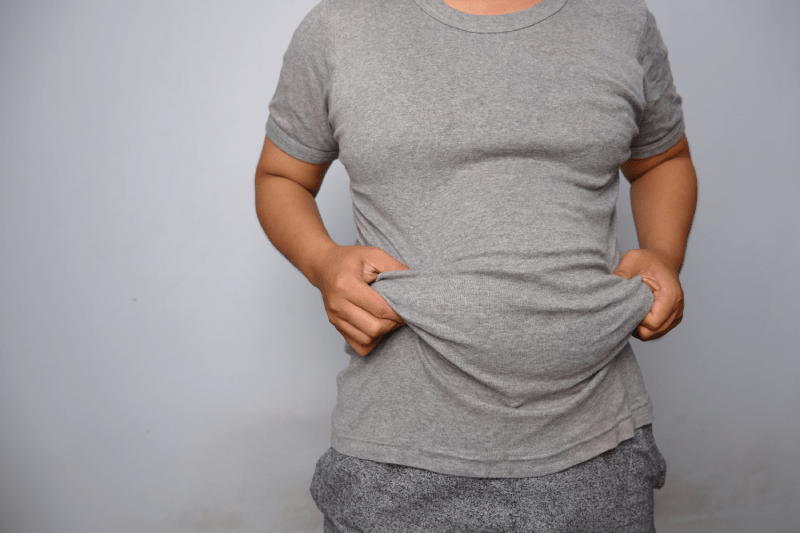
Liposuction or Tummy Tuck?
Liposuction and tummy tuck, also known as abdominoplasty, are two of the most popular cosmetic surgery procedures performed today, and they both aim to improve one’s body contour, specifically in the midsection. While both procedures are related to removing excess fat and reshaping the body, they serve different purposes and are suited for different patients. Choosing which procedure to undergo depends on the patient’s specific anatomy, goals, and expectations.
Differences Between Liposuction and Tummy Tuck
Purpose
Liposuction is targeted to remove stubborn fat deposits that do not respond to diet and exercise, in areas such as the hips, thighs, love handles, buttocks, arms, face, neck, and abdomen. In contrast, tummy tuck is focused on removing excess skin and tightening muscles in the abdominal area.
Extent of Procedure
Liposuction is a minimally-invasive procedure that involves inserting a thin tube, also known as a cannula, through a small incision to suction out unwanted fat cells. The procedure only targets fat cells beneath the skin and does not address loose or sagging skin. Tummy tuck surgery is a more extensive and invasive procedure, requiring a larger incision, and involves the removal of excess skin and fat as well as the tightening of abdominal muscles.
Recovery
Recovery from liposuction is typically faster and less painful than that for tummy tuck surgery. Most patients can return to work and normal activities within a week or two, while a full recovery from tummy tuck surgery may take several weeks to a few months.
Ideal Candidates
Liposuction is ideal for patients with good skin elasticity, few stretch marks, and localized pockets of excess fat. Patients who have lost significant weight, undergone pregnancy or suffer from abdominal muscle separation may be better suited for tummy tuck surgery.
Ultimately, choosing between liposuction and tummy tuck depends on what areas of your midsection you want to address and your ultimate goals. By consulting with a board-certified plastic surgeon, you can better understand the advantages and limitations of each procedure and make an informed decision aligned with your goals and expectations. If you want to learn which aesthetic operation you should have and which is more suitable for you, you can send us a message.
Is Liposuction Necessary After Tummy Tuck?
Liposuction and tummy tuck (abdominoplasty) are two separate procedures that are often performed together to achieve a more toned and contoured midsection. While a tummy tuck primarily focuses on removing excess sagging skin and tightening the abdominal muscles, liposuction aims to remove stubborn fat deposits from targeted areas of the body. Whether or not to undergo liposuction after tummy tuck is a personal decision that depends on several factors.
In conclusion, liposuction is not necessary after tummy tuck, but it can be a beneficial method that will provide body contouring in areas of stubborn fat resistant to diet and exercise which can help in creating an aesthetically pleasing appearance. Patients should consult with a board-certified plastic surgeon to evaluate the benefits and risks of combining the procedures and make an informed decision that aligns with their desired postoperative results.
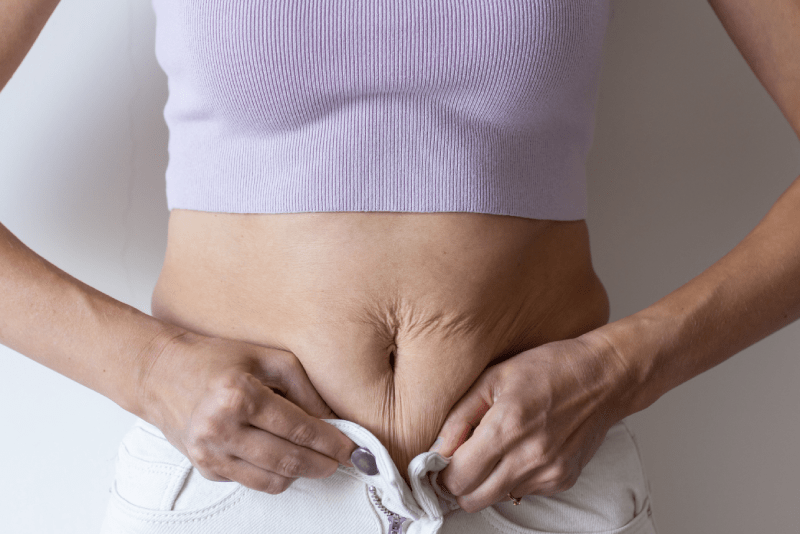
How Much Does Tummy Tuck Surgery Cost? Tummy Tuck Surgery in Turkey
The cost of tummy tuck surgery varies depending on several factors including the surgeon’s experience, the geographical location of the clinic, the extent of the surgery, and the type of anesthesia used during the procedure. In Turkey, the cost of tummy tuck surgery is relatively affordable, with prices generally ranging from 3200€ to 5000€. Of course, actual costs will depend on the factors listed above, as well as any additional costs for medical testing, pre-operative consultations, and post-operative care.
One of the reasons why tummy tuck surgery is less expensive in Turkey compared to other countries is the lower cost of living in the country. The cost of medical care is significantly lower in Turkey, which makes it a popular destination for medical tourists seeking quality healthcare services at affordable prices.
However, while the lower cost of tummy tuck surgery in Turkey is appealing, it is important to choose a reputable clinic with experienced surgeons who use modern medical equipment and follow strict safety protocols. Patients should also be aware that the low cost of surgery does not necessarily mean that the quality of care is subpar. Many hospitals and clinics in Turkey are accredited by international organizations, so patients can expect the same level of care as they would receive in their home country.
In general, tummy tuck surgery in Turkey is an affordable and effective way to achieve a firmer and shaped abdomen. With high-quality medical facilities, experienced surgeons, and affordable prices, Turkey has become a popular destination for people seeking cosmetic surgery procedures. However, patients should ensure that they thoroughly research any clinic or surgeon they are considering and ensure that they receive the highest quality care possible. It is possible to achieve the aesthetic appearance you want with successful tummy tuck surgeries in Turkey. Just contact us for affordable and reliable tummy tuck surgeries.
